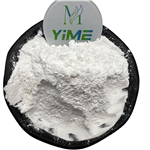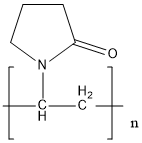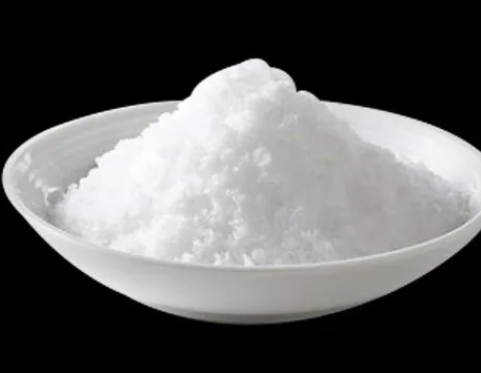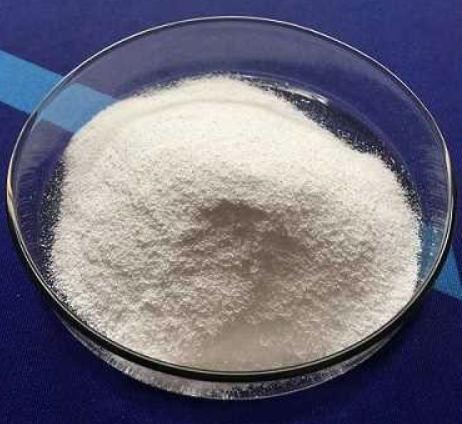Introduction of Polyvinylpyrrolidone
General description
N-Vinyl-2-pyrrolidone is a member of pyrrolidin-2-ones. Polyvinylpyrrolidone is a white powder. Compatible with a wide range of hydrophilic and hydrophobic resins. As a synthetic water-soluble polymer compound, PVP has the general properties of water-soluble polymer compounds, colloidal protection, film-forming, adhesion, hygroscopicity, solubilization or condensation, but it has the most characteristics. Therefore, people pay attention to its excellent solubility and physiological compatibility. In synthetic polymers, Polyvinylpyrrolidone, which is soluble in both water and most organic solvents, has low toxicity and good physiological compatibility. Especially in the fields closely related to people's health such as medicine[1], food and cosmetics, with the reduction of the price of its raw material butyrolactone, it will show a good prospect for its development.
Application
Polyvinylpyrrolidone, for short, is a non-ionic polymer compound. It is the most characteristic and most widely studied fine chemical in N-vinyl amide polymers. It has developed into a series of homopolymers, copolymers and cross-linked polymers in three categories: non-ionic, cationic and anionic, three specifications of industrial grade, pharmaceutical grade and food grade, and the relative molecular weight ranges from thousands to more than one million. It has been widely used for its excellent and unique properties. polyvinylpyrrolidone is divided into four grades according to its average molecular weight. Traditionally, it is often expressed by K value, and different K values represent the corresponding average molecular weight range of polyvinylpyrrolidone. K value is actually the characteristic value related to the relative viscosity of polyvinylpyrrolidone aqueous solution, and viscosity is the physical quantity related to the molecular weight of polymer. Therefore, K value can be used to characterize the average molecular weight of polyvinylpyrrolidone. Generally, the greater the K value, the greater the viscosity and the stronger the adhesion.[2]
1.polyvinylpyrrolidone(PVP),with low Mn and single end groups was prepared by free radical polymerization,using AIBN as initiator,2- isopropoxyethanol as solvent and 2-mercaptoethanol as chain transfer agents respectively. Thenonionic waterborne polyurethane dispersions with two chain extenders,1,4-butanediol (BDO)and trimethylolpropane(TMP)were synthesized,in which a hydrophilic segment,a single ended hydroxyl functional polyvinylpyrrolidone(PVP) was incorporated. It was first reported to use PVP as hydrophilic segment for synthesis of waterborne PU dispersion[3].
Figure Radical fragments of initiator and chain transfer agents
2.Puerarin is monohydrate (puemh) and forms dihydrate (PUE) with lower solubility in the process of supersaturation dissolution rarin dihydrate, PUEDH)。In addition, the effects of polyvinylpyrrolidone and its types (pvpk12, pvpk30 and pvpk90) on delaying or inhibiting the transformation from puemh to puedh were also investigated[4].
3.PVP can be used as a gelling agent for tertiary oil recovery to improve the oil recovery rate of the oilfield. As an auxiliary of photosensitive materials, it helps to reduce the latex degree and enhance the coverage of developing images. It is used as thickener, dispersion stabilizer and bonding regulator in the process of polymer polymerization. It is used as dispersant in papermaking industry and cocatalyst in propylene amine gasification reaction. PVP is also emerging in the fields of separation membrane, light curing resin, laser disc, drag reduction coating, building materials, steelmaking and electroplating.
Synthesis
PVP(Polyvinylpyrrolidone) is obtained by bulk polymerization and solution polymerization with monomer vinylpyrrolidone (NVP) as raw material. In the preparation process of bulk polymerization, due to the problems of high viscosity of the reaction system, difficult diffusion of the polymer, difficult removal of polymerization heat, resulting in local overheating, the obtained products have low molecular weight, high content of residual monomers, and are mostly yellow, which has little practical value. PVP is generally synthesized by solution polymerization in industry. There are two main routes for PVP production polymerization. The first is NVP solution polymerization in organic solvent, and then steam stripping. The second route is aqueous solution polymerization of NVP monomer with water-soluble cationic, anionic or non-ionic monomers. PVP homopolymer can be obtained by directly heating NVP monomer above 140 ℃, or adding initiator to NVP solution for heating, or adding initiator to NVP solution (the solvent can be water, ethanol, benzene, etc.) for polymerization through free radical solution, or directly irradiating NVP monomer or its solution with light. Different polymerization methods lead to different structures and properties of polymers, The polymer obtained by free radical solution polymerization has uniform composition and structure. PVP homopolymers with different molecular weight and water solubility can be obtained by adjusting the monomer concentration, polymerization temperature, initiator dosage and other reaction conditions.
Process 1: prepare NVP into a solution with a mass fraction of 50%, use a small amount of hydrogen peroxide as catalyst, initiate polymerization at 50 ℃ under the action of azodiisobutyronitrile, and almost convert NVP into PVP. Then ammonia is added to the polymer to decompose the residual azodiisobutyronitrile. The monomer polymerization conversion is nearly 100% and the solid content is 50%.
Process 2: add 0.4g dispersant P (NVP co VAC) and 80g dispersion medium ethyl acetate into a 250ml four mouth flask, stir and dissolve in a constant temperature water bath at 70 ℃, add 20g monomer NVP and 0.15g initiator AIBN, react for 6h in nitrogen atmosphere, cool and filter, and put the insoluble matter into a vacuum drying oven for 24h to obtain white PVP solid powder.
AIBN is used as initiator in the polymerization of PVP. There is no literature on the synthesis of PVP initiated by water-soluble azo initiator, but someone is doing this work. Since both NVP monomer and PvP are soluble in water, water-soluble azo initiators can be used to initiate polymerization to form linear PVP polymers. Moreover, AIBN contains cyano groups harmful to human body, while most water-soluble azo initiators do not contain cyano groups, and PVP is mostly used for products in direct contact with human body, so water-soluble azo initiators have more advantages than AIBN.
Storage and Safety
On October 27, 2017, the list of carcinogens published by the international agency for research on cancer of the World Health Organization was preliminarily sorted and referenced. Polyvinylpyrrolidone was included in the list of class 3 carcinogens.
Reference
1."abio.1993.1068,".
2. "Polyvinylpyrrolidone – sodium hyaluronate gel: a bioadherent oral gel for the treatment of oral mucositis and other painful oral lesions,".
3.Preparation of Nonionic Waterborne Polyurethane by Hydroxyl Functionalized Polyvinylpyrrolidone.
4.Zhong Zhaoyi, Wu Min, Qian Shuai, et al: "polyvinylpyrrolidone inhibits the transformation of Puerarin monohydrate to dihydrate during dissolution", Journal of pharmacy, 2017, No. 02, pp. 302-309.
);You may like
Related articles And Qustion
See also
Lastest Price from Polyvinylpyrrolidone manufacturers

US $0.00/Kg/Drum2024-04-26
- CAS:
- 9003-39-8
- Min. Order:
- 1KG
- Purity:
- 99%
- Supply Ability:
- 500mt

US $35.00/KG2024-04-26
- CAS:
- 9003-39-8
- Min. Order:
- 10KG
- Purity:
- 99
- Supply Ability:
- 1000kg



